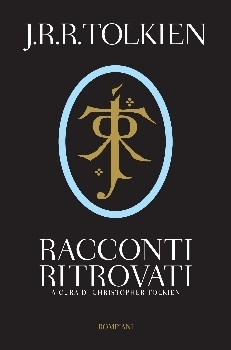What do you think?
Rate this book


436 pages, Paperback
First published October 28, 1983
Να που βρήκα και Τόλκιν να με κουράσει, μετά από 20 χρόνια που είμαι θαυμαστής του.
Ένα βιβλίο που σε υπνωτίζει γρηγορότερα κι από Xanax ή Νοοτρόπ.
O χειρότερός μου Τόλκιν μέχρι στιγμής.
Όταν φυσικά λέω ο χειρότερος το εννοώ φυσικά σε σύγκριση με τα άλλα βιβλία του Τόλκιν, που είναι όλα βιβλία 5 και 4 αστέρων.
Άρα είναι πολύ καλύτερο βιβλίο από πολλά άλλα βιβλία που δεν ανήκουν στον Τόλκιν.
Ένας λόγος που δεν μου άρεσε το συγκεκριμένο βιβλίο ήταν η εξαιρετικά μικροσκοπική γραμ��ατοσειρά και ο αργός ρυθμός της ιστορίας.
Η γραμματοσειρά ήταν τόσο μικροσκοπική που μου έπαιρνε 4 λεπτά για να ολοκληρώσω μια σελίδα.
Με άλλα λόγια 40 λεπτά για 10 σελίδες και 1 ώρα για μόλις 15 σελίδες!
Αυτό επηρεάζει ψυχολογικά τον αναγνώστη.
Νιώθεις ότι δεν σημειώνεις καμία πρόοδο και δεν ανυπομονείς για μια ακόμη σελίδα που μοιάζει σαν να σκαρφαλώνεις το Βουνό του Χαμού χωρίς παπούτσια.
Επιπλέον, όταν δεν σε συνεπαίρνει ούτε η ιστορία, τα πράγματα χειροτερεύουν.
Μια ιστορία που ασχολείται με την Κοσμογονία και τη Θεογονία της Μέσης Γης. Θέματα πολύ απομακρυσμένα και απόμακρα την ίδια στιγμή από τον άνθρωπο αναγνώστη.
Αυτό που διάβασα θα μπορούσαμε να πούμε ότι είναι μια έκδοση Beta του Σιλμαρίλλιον.
Είναι τρεις φορές μεγαλύτερη και έχει πολλές ασυνέπειες στην πλοκή, με ονόματα, τοπωνύμια, και ιστορικά στοιχεία που δεν υπάρχουν στο δημοσιευμένο Σιλμαρίλλιον, με αποτέλεσμα να είναι πολύ, μα πάρα πολύ πιο αργή.
Έχω την ελπίδα πάντως πως οι υπόλοιποι τόμοι της δωδεκάτομης Ιστορίας της Μέσης Γης θα είναι πιο ενδιαφέροντες, ελκυστικοί, και φιλικοί προς τον αναγνώστη, ειδικά το κομμάτι που διαδραματίζεται στην Τρίτη Εποχή, την αγαπημένη μου Εποχή.
Αλλά αυτό δεν θα συμβεί πριν από τον τόμο 5.
Οψόμεθα!
ΒΑΘΜΟΛΟΓΙΑ
Χαρακτήρες: 4/10
Γραφή: 8/10
Αναγνωσιμότητα: 4/10
Εμπειρία: 6/10
Ιστορία: 5/10
Σύνολο: 5.4--> 2.7 stars ★★★